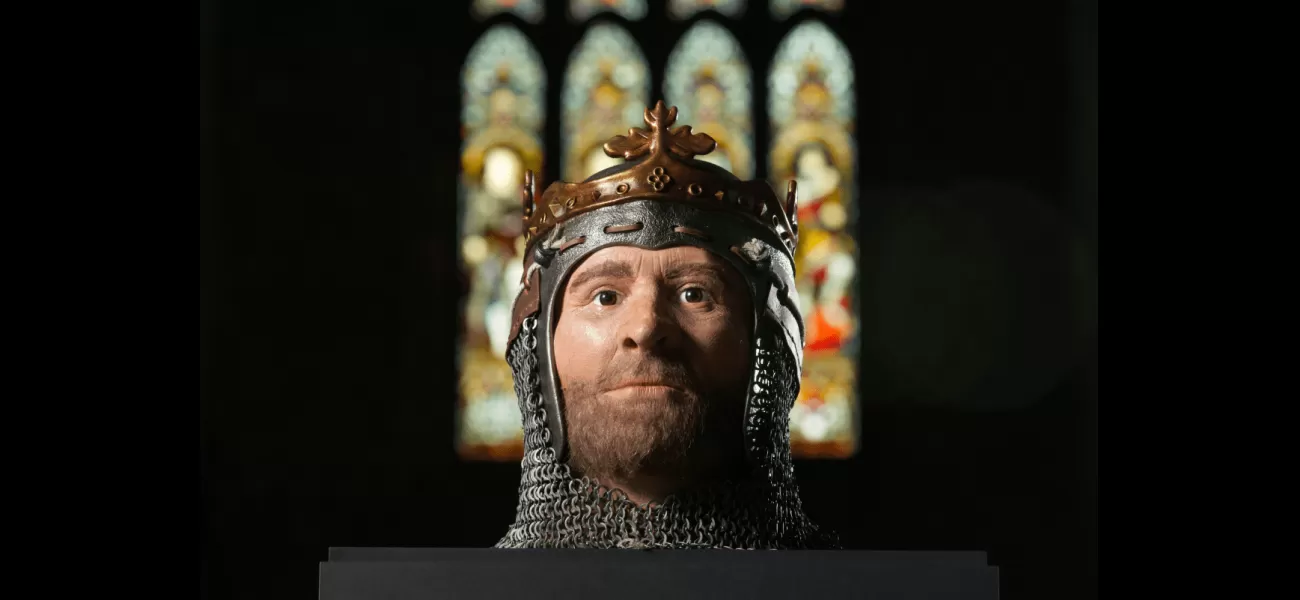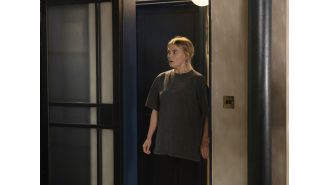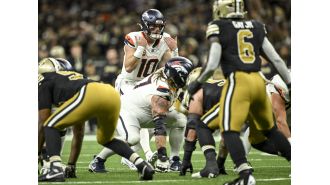New 3D model of Scottish hero king, Robert the Bruce, revealed at Dunfermline Abbey.
Scotland's legendary king, Robert the Bruce, has been brought to life through a 3D model of his face, created from a cast of his skull and displayed at Dunfermline Abbey where he was buried 750 years ago.
July 30th 2024.

750 years ago, a man was born who would become known as Scotland's hero king. Some even called him the country's greatest monarch. His name was Robert the Bruce, and now visitors to Dunfermline Abbey can see his face in person. You see, a 3D model of his face has been created and placed in the very spot where he was laid to rest.
This lifelike reconstruction was made from a cast of Robert the Bruce's skull. It is said to be the most accurate depiction of him to date. The model is adorned with a helmet and crown, just as he would have worn at his most famous victory - the Battle of Bannockburn in 1314. This project was a collaboration between the University of Glasgow and Liverpool John Moores University Face Lab, who first released the digital model a few years ago.
The idea for this 3D model came about in 2012, after the discovery of King Richard III's skeleton in Leicester. Dr Martin MacGregor from Glasgow University was inspired to create a similar reconstruction for Robert the Bruce. He explained, "In his short 55 years of life, Robert Bruce accomplished the impossible - he brought peace and freedom to a war-torn and colonized kingdom. While we know a lot about his incredible life from historical sources, we have very little information about his appearance." This was the driving force behind the team of historians, museum curators, geneticists, forensic scientists, and medical artists who came together to create this depiction of the hero-king.
Using a combination of historical research and scientific analysis, the team was able to produce a truly lifelike representation of Robert the Bruce's head. They used a 3D laser scanner to scan the cast of his skull, which allowed them to accurately determine the muscle formation. Then, using CGI technology, they added realistic skin texture over the muscle structure. The only feature that may be slightly off is the nose, due to the deterioration of the bones.
One of the most debated aspects of Robert the Bruce's life was whether or not he suffered from leprosy. To address this, the team created two versions of the digital reconstruction - one without leprosy and one with a mild representation of the disease. However, for the physical 3D model, they chose to portray him without any visible signs of leprosy.
Dr MacGregor continued, "The head is dressed in a helmet surmounted by a crown, just as he would have worn at the Battle of Bannockburn in 1314. It's only fitting that 750 years after his birth in 1274, Dunfermline Abbey - where Robert the Bruce was laid to rest in 1329 - should host an exhibition that allows us to come face-to-face with Scotland's greatest monarch." The model will be on display until December 7th.
If you're interested in learning more about Scottish culture, you can find more stories here. And be sure to subscribe to read the latest issue of Scottish Field.
This lifelike reconstruction was made from a cast of Robert the Bruce's skull. It is said to be the most accurate depiction of him to date. The model is adorned with a helmet and crown, just as he would have worn at his most famous victory - the Battle of Bannockburn in 1314. This project was a collaboration between the University of Glasgow and Liverpool John Moores University Face Lab, who first released the digital model a few years ago.
The idea for this 3D model came about in 2012, after the discovery of King Richard III's skeleton in Leicester. Dr Martin MacGregor from Glasgow University was inspired to create a similar reconstruction for Robert the Bruce. He explained, "In his short 55 years of life, Robert Bruce accomplished the impossible - he brought peace and freedom to a war-torn and colonized kingdom. While we know a lot about his incredible life from historical sources, we have very little information about his appearance." This was the driving force behind the team of historians, museum curators, geneticists, forensic scientists, and medical artists who came together to create this depiction of the hero-king.
Using a combination of historical research and scientific analysis, the team was able to produce a truly lifelike representation of Robert the Bruce's head. They used a 3D laser scanner to scan the cast of his skull, which allowed them to accurately determine the muscle formation. Then, using CGI technology, they added realistic skin texture over the muscle structure. The only feature that may be slightly off is the nose, due to the deterioration of the bones.
One of the most debated aspects of Robert the Bruce's life was whether or not he suffered from leprosy. To address this, the team created two versions of the digital reconstruction - one without leprosy and one with a mild representation of the disease. However, for the physical 3D model, they chose to portray him without any visible signs of leprosy.
Dr MacGregor continued, "The head is dressed in a helmet surmounted by a crown, just as he would have worn at the Battle of Bannockburn in 1314. It's only fitting that 750 years after his birth in 1274, Dunfermline Abbey - where Robert the Bruce was laid to rest in 1329 - should host an exhibition that allows us to come face-to-face with Scotland's greatest monarch." The model will be on display until December 7th.
If you're interested in learning more about Scottish culture, you can find more stories here. And be sure to subscribe to read the latest issue of Scottish Field.
[This article has been trending online recently and has been generated with AI. Your feed is customized.]
[Generative AI is experimental.]
0
0
Submit Comment





